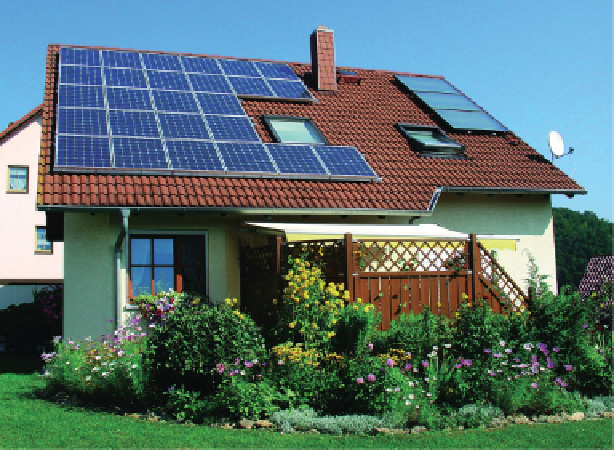Environmental Engineering Reference
In-Depth Information
example, with natural gas, is installed. If on occasion the heat of the sun is not suf-
fi cient, a supplemental heater then takes over.
In China solar thermal systems for heating water have gained a high market share.
In remote rural regions there is almost no access to fossil fuels. The inhabitants of
these regions do not have the possibility of heating their water as and when required
if there is no sun. China uses mainly vacuum-tube collectors because of the need
to guarantee high supply reliability from solar systems.
6.3.1.2 Systems with Forced Circulation
A system should be technically optimized if the sun is to be used to produce hot
water in areas with low outdoor temperatures. It would be too risky to heat up water
for domestic use directly in a collector because the water would freeze in winter
and therefore could destroy the collector. Consequently, the water that fl ows through
the collector is mixed with an antifreezing agent. However, antifreezing agents
cannot be used in the water supply as they have negative effects on health. A heat
exchanger therefore separates the water circulation from the solar circulation and
transfers the heat to a hot water storage cylinder. The storage cylinder is normally
designed so that it can provide enough hot water for two to three bad days until a
major supply of heat comes from the solar collector.
Flat roofs are less common in Central and Northern Europe and North America than
they are in Southern Europe (Figure 6.11). Hot water storage cylinders are tradition-
ally located in a basement or in a utility room. If the hot water storage is situated
Figure 6.11
Single-family house with photovoltaic system (left) and fl at-plate collectors
for heating water (right).
Photo: SunTechnics.

